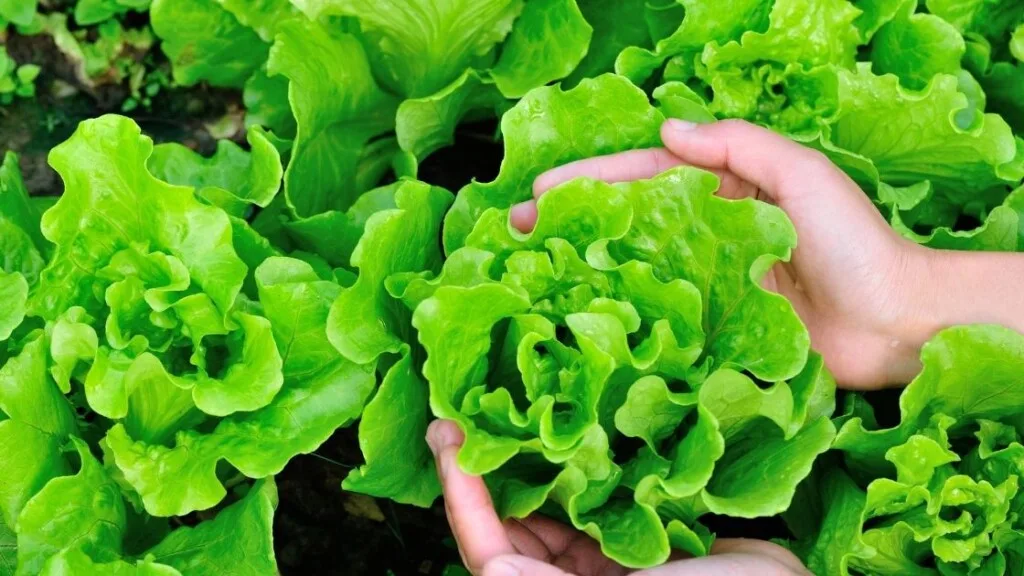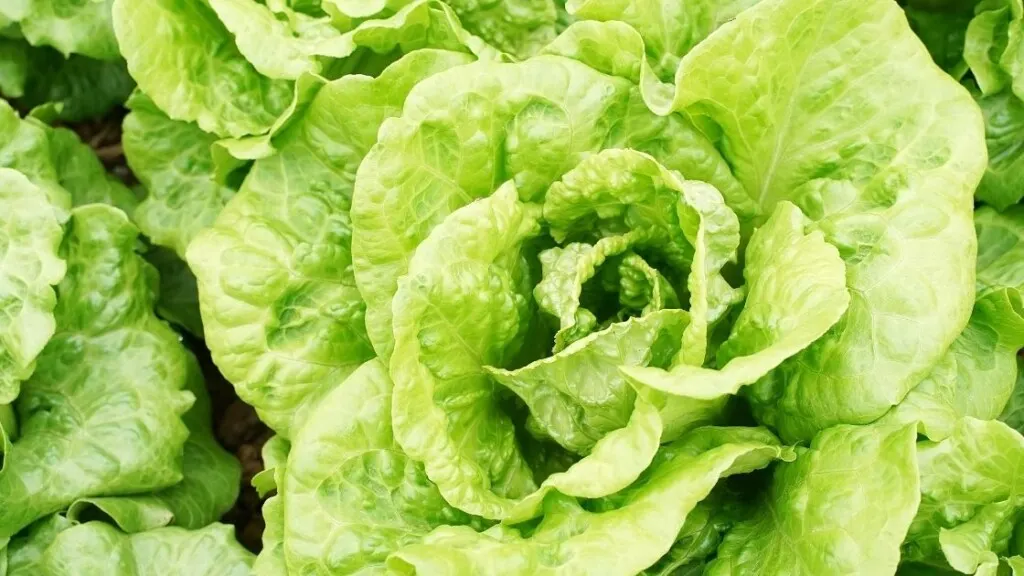
Boston lettuce is head lettuce with smooth, tightly-packed leaves. It’s a popular choice for salads and sandwiches, and it’s slightly sweet. Boston lettuce is low in calories and high in nutrients, making it a wise choice for diet-conscious individuals.
It’s also rich in antioxidants, which can help protect your body against disease.
If you’re looking for a tasty, nutrient-rich salad green, give Boston lettuce a try!
Table of Contents
Types of Lettuce And Greens

Lettuce is frequently eaten raw, dressed, and combined with other salad greens in salads. Lettuces come in various flavors and textures; whether you’re using them raw or cooked, several types may add a lot of texture and taste to anything you’re cooking. If you decide to prepare them, you have several options for cooking methods.
The different types of lettuce include:
Dandelion Greens
Dandelion Greens are an extremely nutritious food that provides significant cardiovascular benefits due to their rich vitamin K content and anti-cancer benefits because of antioxidants.
These Greens and other bitter greens are best used in salads or cooked as a side dish but can also be added to soups and stews. When steaming dandelion greens, you’ll want to remove the greens from the heat when they’re still bright green and slightly crisp.
You can also serve them with a sauce made from lemon juice, salt, pepper, and olive oil to lessen their bitterness.
Romaine Lettuce
Romaine lettuce is one of the most popular types of lettuce in the United States. It is usually eaten raw in salads or sandwiches.
This lettuce is an excellent source of antioxidant vitamins A and C, which help protect cells from damage. It also provides potassium, dietary fiber, calcium, iron, and folic acid.
It is considered a “cool season” crop, meaning it grows best during spring and fall when the weather is not too hot or too cold.
Romaine lettuce is best suited for salads because of its crunchy texture and slightly bitter flavor that pairs well with dressings. The ribs and outer leaves of romaine can even be a bit sore, a taste that’s sometimes enjoyed by many.
Butterhead Lettuce
Butterhead lettuce has soft leaves and a mellow taste, making it perfect for salads or sandwiches. Iceberg is another type of butterhead lettuce.
Iceberg lettuce is most often used in salads because its vast size makes it easy to serve with other ingredients. However, iceberg lettuce does not have much flavor and can be pretty watery.
Although it is less nutritious than other types of lettuce, it contains fewer calories and more water, making it perfect for people on a diet or who want to eat healthily.
Iceberg Lettuce
Iceberg lettuce is a very mild, pale green-colored lettuce that has been grown in the United States since the 1950s. It has a soft texture, making it perfect for salads because of its ease of cutting and serving. Iceberg lettuce is best used to accompany sandwiches, burgers, and tacos.
Iceberg is also known as Crisphead lettuce because it has tightly packed leaves that form a crisp head when mature.
While iceberg lettuce doesn’t have much flavor, many people enjoy the crunchy texture and mild flavor it provides when used in salads and sandwiches, particularly with creamy dressings.
What is Boston Lettuce?

Boston lettuce is a type of head lettuce. It has a light green color and is grown in the cold climate of Boston, Massachusetts. The leaves are smooth, to accompany and the head is compact.
The leaves are narrower and more tender than other types of lettuce, such as iceberg lettuce. When picking or cutting lettuce, remember that the darker green the leaf, the greater the nutrient content.
Growing Boston Lettuce

Growing your own Boston Lettuce can be very rewarding because it is easy to do and requires little maintenance.
Using hydroponics makes it possible to grow Boston Lettuce indoors because it involves setting up a special tank with equipment that circulates water enriched with nutrients throughout the plant’s roots.
Another option for planting your lettuce is to start it from seed in a garden or pot filled with soil. Once planted, lettuce needs to be watered regularly until it matures.
Boston Lettuce is cultivated much like any other type of lettuce. After being seeded in late spring or early summer, it takes around 70 days to mature.
Boston Lettuce is exceptionally vulnerable to cold weather, making growing it almost impossible during the winter months. During this time, an increasing number of farmers use greenhouse techniques to keep their crops safe from frost and frosts.
There are several different types of Boston Lettuce, including the traditional deep green variety and some with variegated white or red leaves.
After harvest, it is usually packaged in sealed plastic bags to keep it fresh for extended periods.
Recipes for Boston Lettuce
Basic Boston Lettuce Salad
Ingredients:
- One head of Boston lettuce
- 1/2 cup of diced red onion
- 1/2 cup of chopped celery
- 1/2 cup of chopped green bell pepper
- 1/4 cup of white balsamic vinegar
- Three tablespoons of olive oil
- salt and black pepper to taste
Instructions:
- Rinse the Boston lettuce and dry it with a paper towel. Remove the core and discard it.
- Cut the lettuce into bite-sized pieces and place it in a large bowl.
- Add the red onion, celery, bell pepper, white balsamic vinegar, olive oil, salt, and black pepper to the bowl. Toss well to combine.
- Transfer the salad to a serving bowl and refrigerate for at least 1 hour before serving.
- Enjoy!
Boston lettuce is a type of lettuce with a mild flavor and a smooth texture. It can be used in salads, sandwiches, and wraps.
Boston Lettuce Salad
Ingredients:
- One head Boston lettuce, chopped
- 1/2 cup red grapes, halved
- 1/4 cup crumbled blue cheese
- 1/4 cup slivered almonds, toasted
- Dressing:
- 1/4 cup olive oil
- Three tablespoons white wine vinegar
- One tablespoon honey
- One teaspoon Dijon mustard
- salt and black pepper to taste
Instructions:
- Combine the chopped Boston lettuce, red grapes, blue cheese, and almonds in a large bowl.
- In a small bowl or glass measuring cup, combine the olive oil, white wine vinegar, honey, Dijon mustard, salt, and pepper. Whisk until blended.
- Pour the dressing over the lettuce mixture and toss well to coat.
- Serve immediately or refrigerate for up to 1 day before serving.
Makes four servings (serving size: about 1 1/2 cups)
Note: Toast the almonds in a small dry skillet over medium heat, constantly stirring, for 2-3 minutes.
Conclusion:
Boston lettuce is a leafy green with a wide appearance and texture. It’s mainly grown in the US but can also be found internationally, especially on Canadian grocery store shelves!
Boston Lettuce comes from sunny days with cool nights, so it needs plenty of water during production time – around 2 hours per day or more if you want yours fresh, look at nightfall as well.
Many recipes use this versatile veggie, including salads topped off by their deliciousness factor alone; stuffed shells made even more tasty thanks primarily due to those bright colors we all know so well from childhood memories filled with this sweet and delicious veggie.


Leave a comment